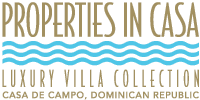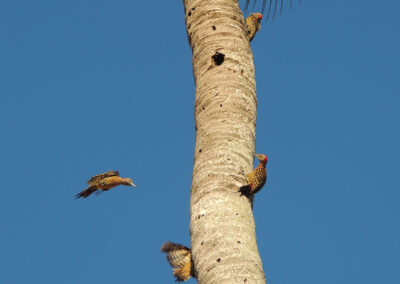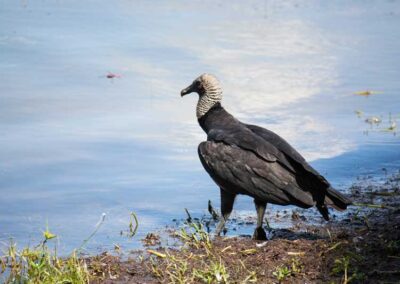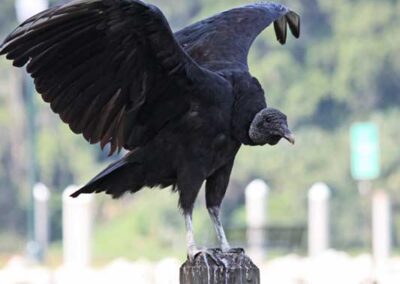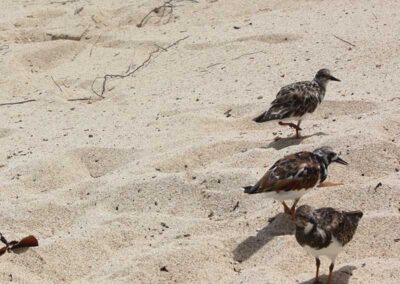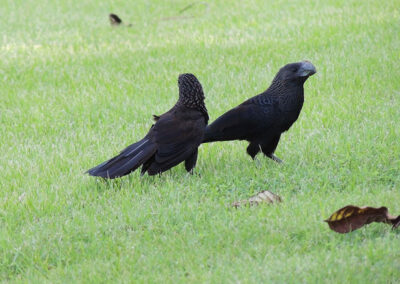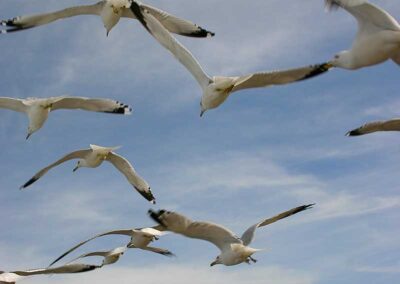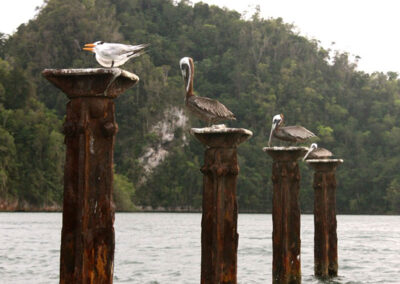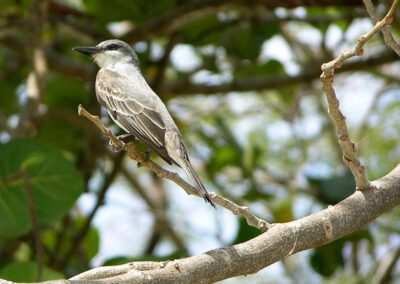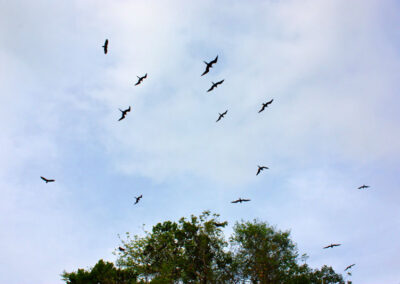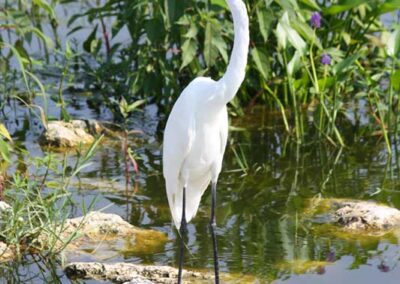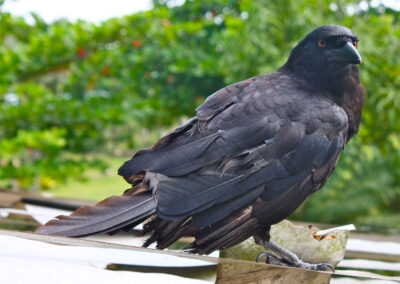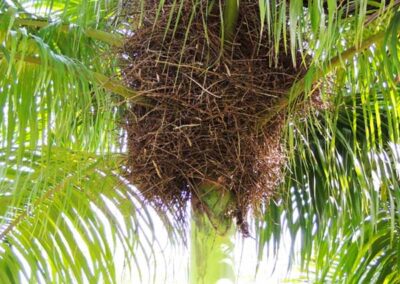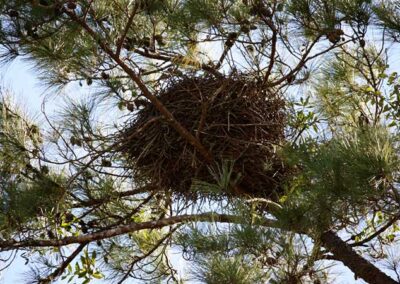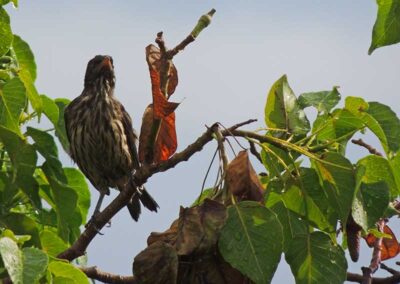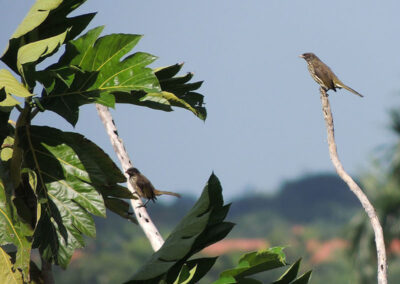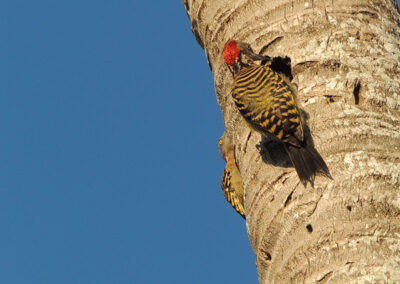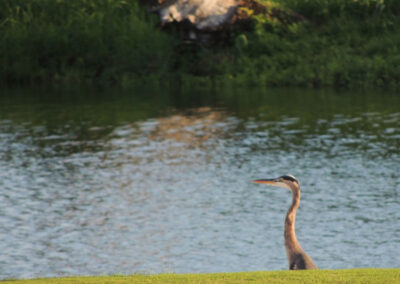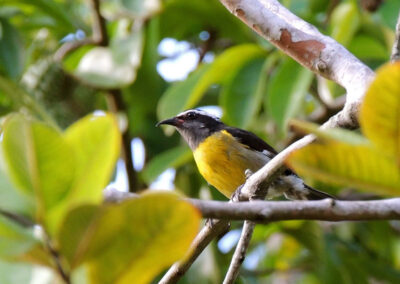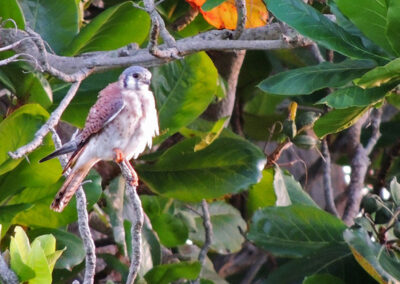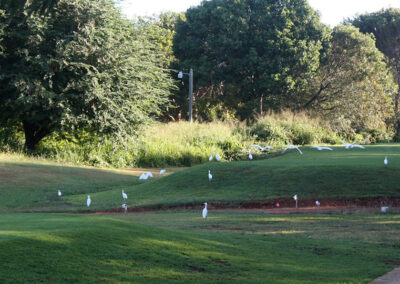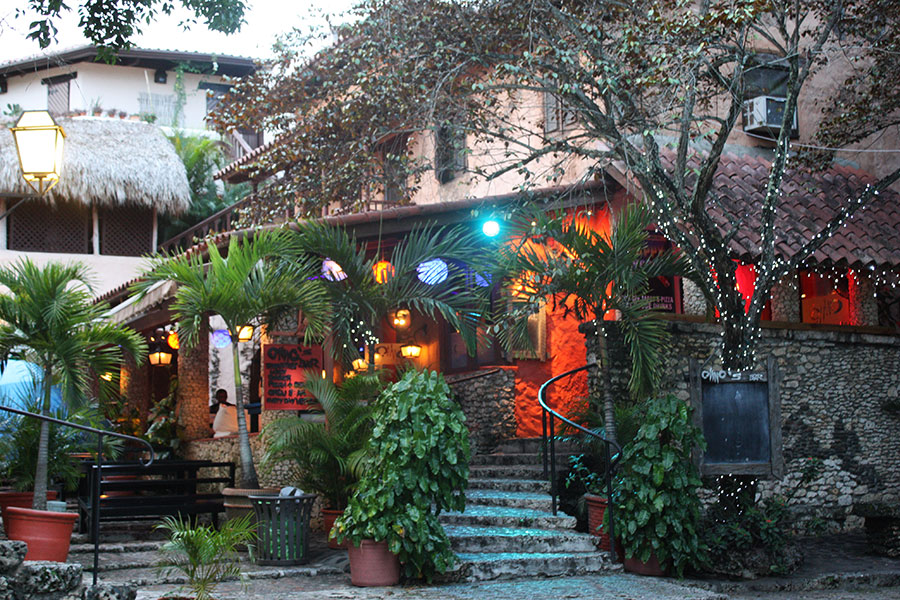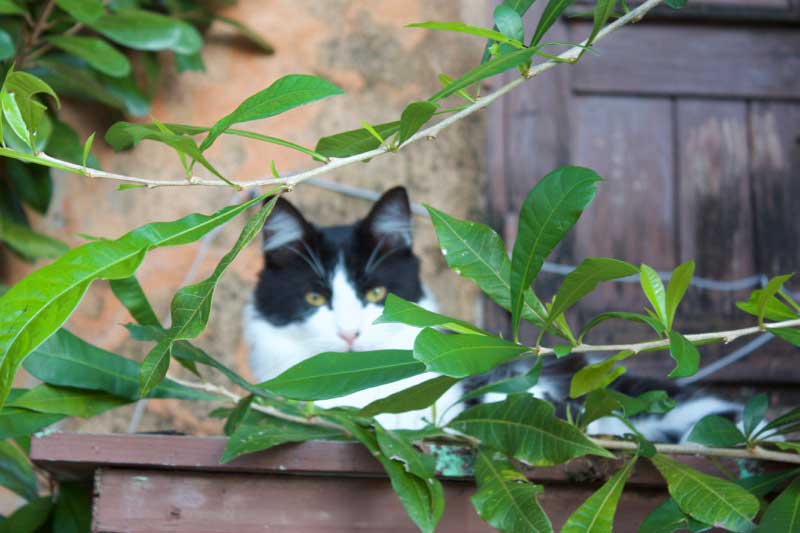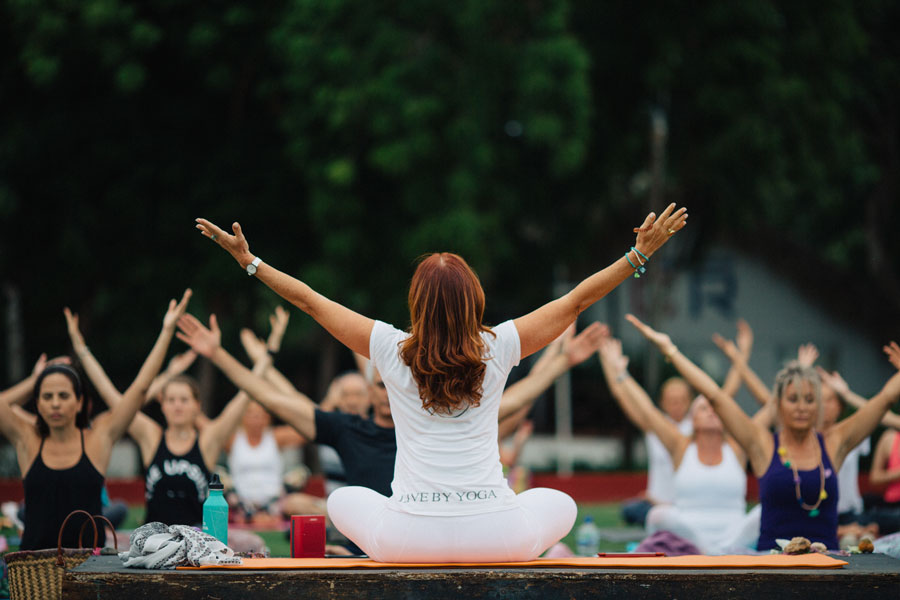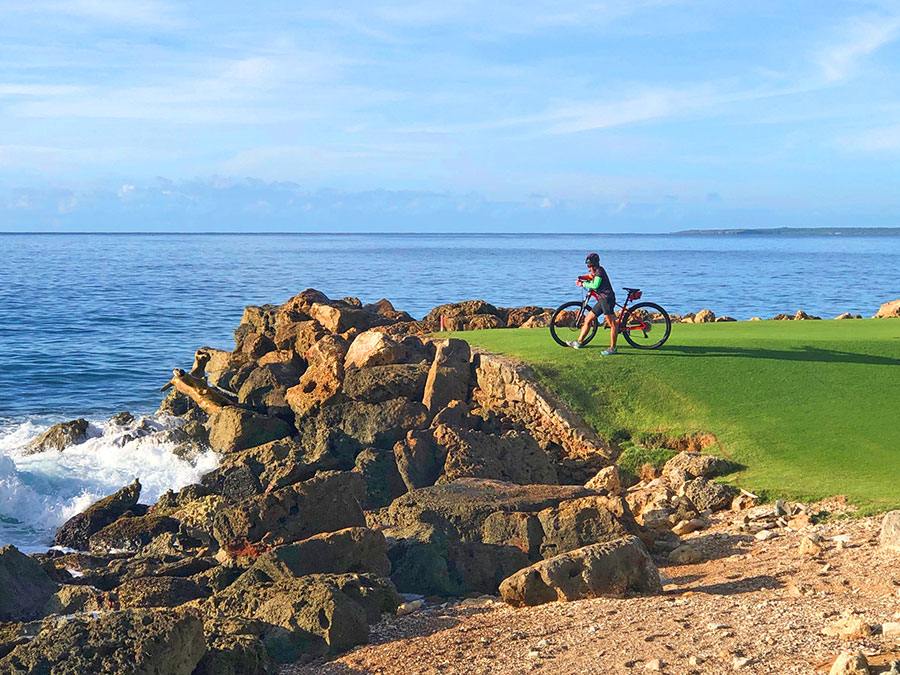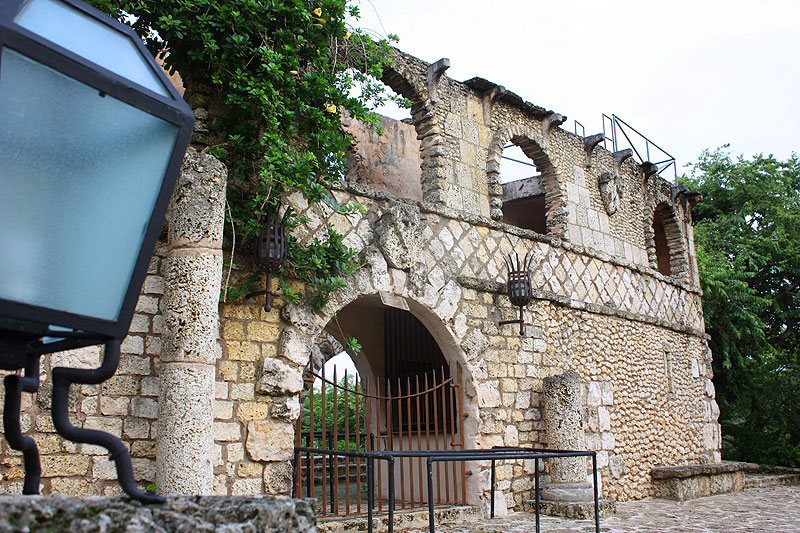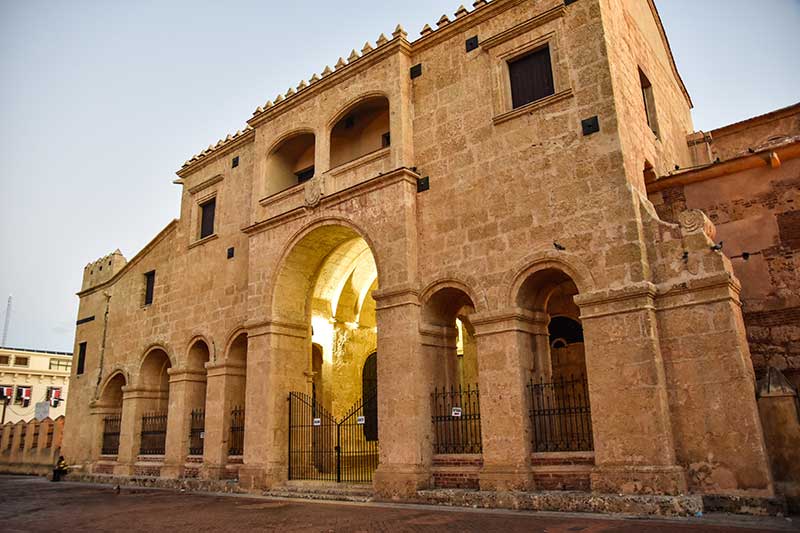Casa de Campo Birds
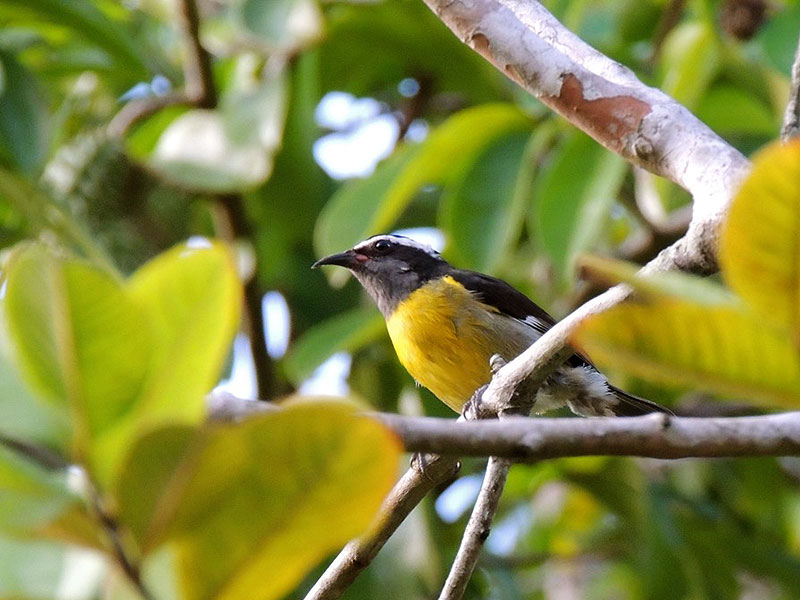
The lush tropical gardens created by the landscaping of the luxury homes, parks, golf courses and hotel, and the humidity these gardens have added to the area have changed the climate in Casa de Campo and La Romana. You could say it has created a micro-climate adding a diverse vegetation and fauna to an area that used to be semi-arid. There are more bugs, more lizards, more seed, and more nectar. All this is very attractive to the different birds that now call Casa de Campo their home. Some birds, like the Hispaniola parakeet were endangered and now are thriving in this area. On any given day you can see large flocks of them flying by making their usual ruckus. It is a beautiful and unexpected by-product of home development.
Every new villa built adds more lush gardens to the tropical paradise that is Casa de Campo. The thatched roofs in the entrance to Casa de Campo are home to a very large flock of swallows ready to welcome you, a site to see in the early morning or late afternoon.
The cliffs on the edge of Altos de Chavón are host to countless hawks, while the coconut trees in the village are alive with hundreds of woodpeckers. The river is teeming with water birds and turkey vultures, while Playa Minitas (Minitas Beach) has a great variety of sea birds. Everywhere you go, you can encounter the national bird Cigua Palmera (palmchat) which builds huge nests in the palms around the complex. And the golf courses are always crowded with African Egrets and Judios (smooth-billed ani). You don’t see many Ani around the island, but they are thriving here. There is one bird that I have only seen around La Piazzetta in Altos de Chavon: Pajaro Bobo (Hispaniola lizard cuckoo.) This is a beautiful bird sporting gorgeous black and white tail feathers. They are usually found in the mountains and very lush areas.
Here are some of the other species found in the area: Antillean piculets, flat billed vireros, black whiskered vireos, pelicans, gulls, terns, egrets, snowy plovers, frigates, green backed heron, loggerhead king bird, black-crowned palm tanager, hummingbirds, moorhens, village weavers, warblers, bananaquit and many more species. Explore the whole resort and you will feast your eyes. Make sure to bring binoculars.
